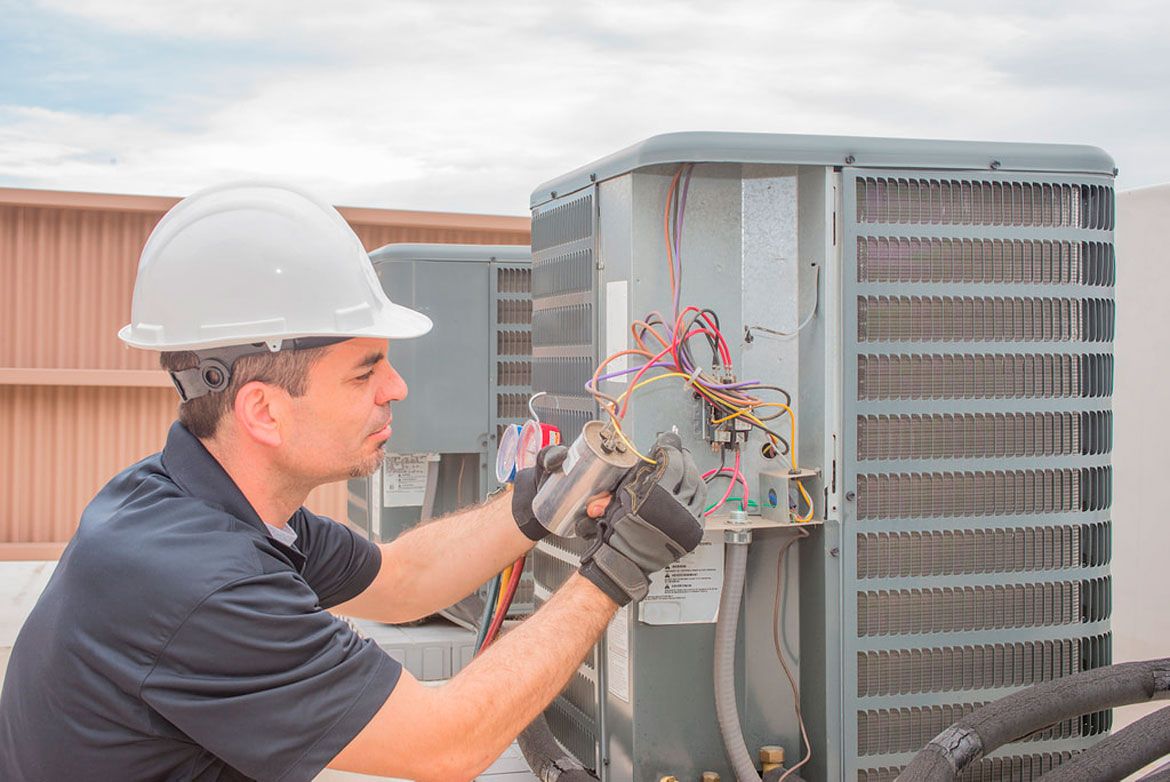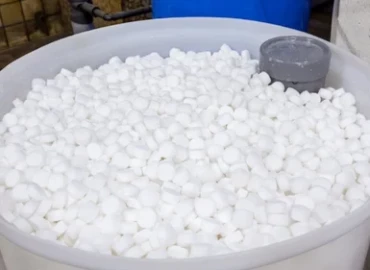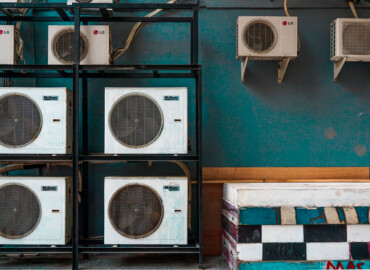Should You Buy a Two-Stage Furnace to Save on Utility Bills?
Are you wondering whether or not to invest in a two-stage furnace? Would it be worth the extra expense? The truth is, one type of furnace won’t suit everyone. It all depends on your situation, where you live, your home, and your heating needs. However, it always helps to be aware of the differences between a tone-stage furnace and a two-stage one. Here are some differences between the two and the advantages of a two-stage furnace.
What is a Two-stage Furnace?
A two-stage furnace is a furnace with two degrees of warming power. The primary stage (low warmth) will work somewhere in the scope of 70 and 80% of the furnace’s assessed limit.
The furnace will go to the next stage (high warmth) under one of two conditions:
- The radiator’s working time, or
- if the indoor controller distinguishes that it must do so, as it is getting a lot colder outside and in the house.
For example, when a radiator is assessed at 80,000 BTU turns, it will work at 60,000 BTU (75% of 80,000 BTU). If the radiator is running for 10 minutes, the furnace will find that it is not warming the house or apartment enough, and will change to high warmth to fulfill the temperature requirement.
To sum up, the key differentiation between a one-stage furnace and a two-stage furnace is that the single-stage range has only one warming power.
Single-stage vs. Two-stage: Key Differences
Single-stage and two-stage furnaces differ in the way they operate and their performance characteristics. Here are the key differences:
- Operation: Single-stage furnaces have only one heating stage, which means they operate at full capacity whenever they are turned on. Two-stage furnaces have two heating stages, which allows them to operate at a lower capacity most of the time.
- Energy efficiency: Two-stage furnaces are generally more energy-efficient than single-stage furnaces because they use less energy overall by operating at a lower capacity most of the time.
- Comfort: Two-stage furnaces provide more consistent and even heating than single-stage furnaces, which can improve comfort levels in your home.
- Noise: Two-stage furnaces are generally quieter than single-stage furnaces because they don’t have to run at full capacity all the time.
- Cost: Two-stage furnaces are typically more expensive than single-stage furnaces because they are more complex and require a compatible thermostat to take full advantage of the two-stage functionality.
- Lifespan: Two-stage furnaces typically have a longer lifespan than single-stage furnaces because they operate at a lower capacity most of the time, which reduces wear and tear on the system.
Every furnace type has a specific gas valve type, which gives it a different heating capacity and burning rate:
- Single-stage furnace: The gas valve of this type of furnace can work at maximum capacity. For example, if the furnace’s power is 100,000 BTU/hr, it will always work at that BTU/hour.
- For two-stage furnaces, it is different. The valve can open at seventy percent of maximum capacity. It can operate at 70,000 BTU/hr or 100,000 BTU/hr, depending on how cold it is in your home and outside.
What separates the two-stage furnace from standard models is its double-stage burner. Conventional furnaces have single-stage burners that consistently work at max speed. In contrast, two-stage furnaces burners can switch to and from high-and low-stage heat creation, depending on the warmth they’re required to generate.
When indoor temperatures are a few degrees lower than wanted, two-stage furnaces will start working at high force, warming your living spaces as fast as possible. After that, they change to low-heating mode, creating merely enough warmth to keep the same warmth throughout the day.
To include significantly greater adaptability and productivity, many two-stage furnaces have variable-speed fans, increasing or lowering the furnace’s pace of warmth circulation all throughout the home. Finally, The more stages a furnace has, the greater the air filtration and temperature balance it will offer you.
Advantages of a Two-stage Furnace
The two-stage furnace has more efficiency than the one-stage furnace. If the home is not too cold, it will release less fuel and save energy that way. Suppose the temperature is five to ten degrees outdoors. In that case, a one-stage furnace will be working in the open position, whereas a two-stage furnace will run in a partially-open position, using seventy percent of its power only.
- Energy efficiency: Two-stage furnaces use a lower setting most of the time, which means they use less energy overall than single-stage furnaces. This can lead to lower energy bills over time.
- Improved comfort: Two-stage furnaces can provide more even and consistent heating, which can improve comfort levels in your home. They also help eliminate temperature swings that can occur with single-stage furnaces.
- Reduced noise: Two-stage furnaces operate more quietly than single-stage furnaces because they don’t have to run at full capacity all the time. This can be particularly beneficial if your furnace is located near living areas.
- Better air quality: Two-stage furnaces typically have a higher airflow rate, which can help improve indoor air quality by reducing dust, allergens, and other pollutants.
- Longer lifespan: Two-stage furnaces are designed to operate at a lower capacity most of the time, which means they experience less wear and tear than single-stage furnaces. This can extend the life of the furnace and save you money in the long run.
- Increased home value: A high-efficiency, two-stage furnace can be a valuable selling point when it comes time to sell your home, as it can help reduce energy costs and improve comfort levels.
Disadvantages of the Two-stage Furnace
- Higher upfront cost: Two-stage furnaces are generally more expensive than single-stage furnaces, so the initial investment may be higher.
- More complex: Two-stage furnaces are more complex than single-stage furnaces, which can make them more difficult to repair and maintain.
- Requires compatible thermostat: To take full advantage of the two-stage functionality, you’ll need to have a compatible thermostat installed. This can add to the overall cost of the system.
- Shorter lifespan: Two-stage furnaces may have a shorter lifespan than single-stage furnaces, due to their more complex design and increased workload.
- More frequent filter changes: The increased airflow in a two-stage furnace can cause the air filter to become clogged more quickly, which means you may need to change it more frequently.
- May not be necessary for mild climates: In regions with mild winters, the benefits of a two-stage furnace may not be as pronounced, which means you may not see a significant return on your investment.
Besides, it is easier to find the parts needed for a one-stage furnace than it is for a two-stage furnace. If it breaks down and you need an urgent furnace repair in wintertime, for example, having a one-stage furnace can provide you with a quicker repair. Nonetheless, contractors, these days do have the parts needed for a two-stage furnace as it is more common to have one today.
If your furnace breaks down, and you don’t want to wait to save money for a two-stage furnace, then a one-stage furnace is the best choice for you.
Things To Consider Before Choosing Your Furnace
Climate: If you live in a region with very cold winters, a two-stage furnace may be a good investment, as it can efficiently heat your home during long periods of sustained cold weather.
Energy costs: If you are paying high energy costs, a two-stage furnace may help you save money in the long run by using less energy to heat your home.
Home insulation: If your home is poorly insulated, a two-stage furnace may not be as effective at saving you money on utility bills, as a significant amount of heat may be lost through your walls, roof, or windows.
Your current furnace: If your current furnace is old and inefficient, upgrading to a two-stage furnace may be a good decision, as it will likely be more energy-efficient and cost-effective.
Budget: Two-stage furnaces can be more expensive than single-stage furnaces, so you will need to weigh the upfront costs against the potential long-term savings.
In summary, buying a two-stage furnace may help you save on utility bills, but it depends on several factors, including climate, energy costs, home insulation, your current furnace, and your budget. It may be worth consulting with a professional HVAC technician to determine the best course of action for your specific situation.



